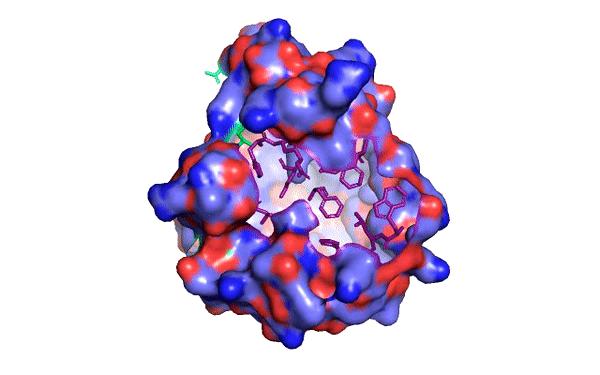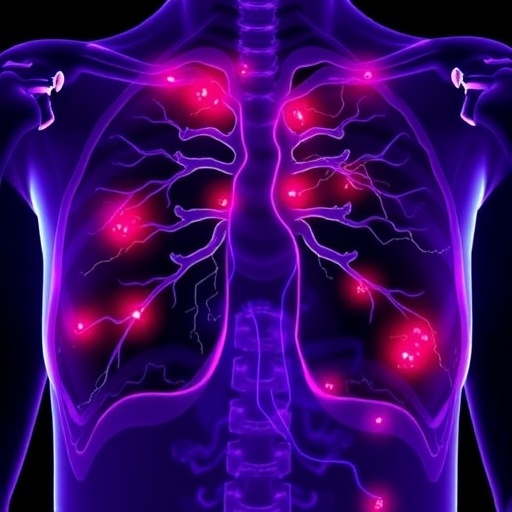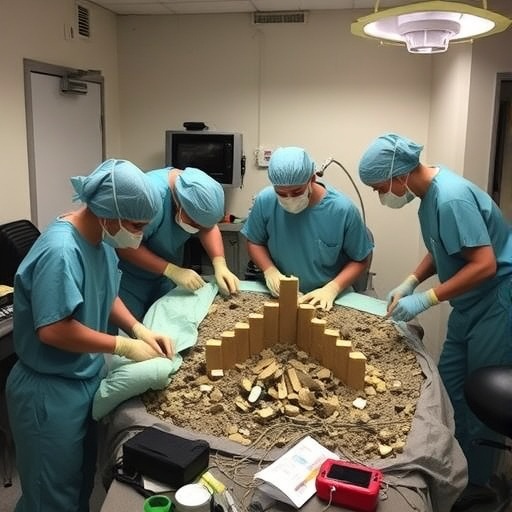Small mutations lead to significant impacts on hepatitis C virus replication in mice

Credit: Credit: Jenna Gaska, Princeton University
Small differences in a liver cell protein have significant impacts on hepatitis C virus replication in mice and humans, findings that could facilitate the development of a mouse model of the infection. The report, led by researchers at Princeton University, was published today in the journal eLife.
Over 70 million people worldwide are chronically infected with hepatitis C virus (HCV), placing them at a high risk of developing liver cancer or cirrhosis. No vaccine exists to prevent infection, largely because the virus naturally infects only humans and chimpanzees, preventing it from being easily studied in the laboratory.
“We want to better understand what HCV needs to replicate in animals other than humans,” said Jenna Gaska, a graduate student in the laboratory of Alexander Ploss, associate professor of molecular biology. “With this knowledge, we could develop improved animal models that can help us study the virus and develop a vaccine against it.”
Mice can be infected with HCV if they are genetically engineered to produce human proteins that allow the virus entry to liver cells. Once inside, however, HCV is unable to replicate unless its genome is altered or the mouse’s immune system is suppressed.
In the current study, Gaska and colleagues looked at whether the resistance to infection is due to a protein called cyclophilin A, which in humans is necessary for HCV to replicate inside host liver cells. The researchers found that the mouse version is much less efficient than the human version at promoting viral replication.
The researchers significantly improved the ability of the mouse version to work in human cells by mutating it to look more like human cyclophilin A. With these small changes, mouse cyclophilin A could now facilitate viral replication at levels comparable to human cyclophilin A.
“When we put this ‘humanized’ version of mouse cyclophilin A into liver cancer cells that normally do not replicate HCV, we saw increases in viral replication,” Gaska said.
Gaska and colleagues additionally tested different versions of cyclophilin A in mouse liver cells containing several other proteins required for HCV entry and replication. Although the addition of human cyclophilin A and one of the mutants had the greatest impact on replication, the levels were still well below those seen in human cells. This suggests that additional factors are still required to allow HCV to robustly replicate inside mouse cells and, ultimately, inside live mice.
“Identifying these factors will be the subject of our future work, which we hope will ultimately lead to an immunocompetent mouse model for studying HCV and developing an effective vaccine,” said Ploss, the study’s senior author.
“This is really a very interesting and exciting study [and] an important step towards developing a tractable HCV small animal model,” said Thomas Pietschmann, a professor at the TWINCORE Center for Experimental and Clinical Infection Research in Hannover, Germany, who was not involved in the study. “It will be interesting to confirm that human cyclophilin also enhances HCV infection and replication in primary hepatocytes and, of course, ultimately also in vivo. Moreover, these findings provide new opportunities to dissect the molecular mechanism of the HCV dependence of cyclophilin A.”
###
The study, “Differences across cyclophilin A orthologs contribute to the host range restriction of hepatitis C virus,” by Jenna M. Gaska, Metodi Balev, Qiang Ding, Brigitte Heller and Alexander Ploss, was published in the journal eLife on May 10, 2019.
This research is funded by the National Institutes of Health, the American Cancer Society, and a Burroughs Wellcome Fund Award for Investigators in Pathogenesis. The work was also supported by a postdoctoral fellowship from the New Jersey Commission on Cancer Research and an NIH training grant. The Flow Cytometry core facility is partially supported by the Cancer Institute of New Jersey Cancer Center Support Grant.
Media Contact
Catherine Zandonella
[email protected]
Related Journal Article
http://dx.




